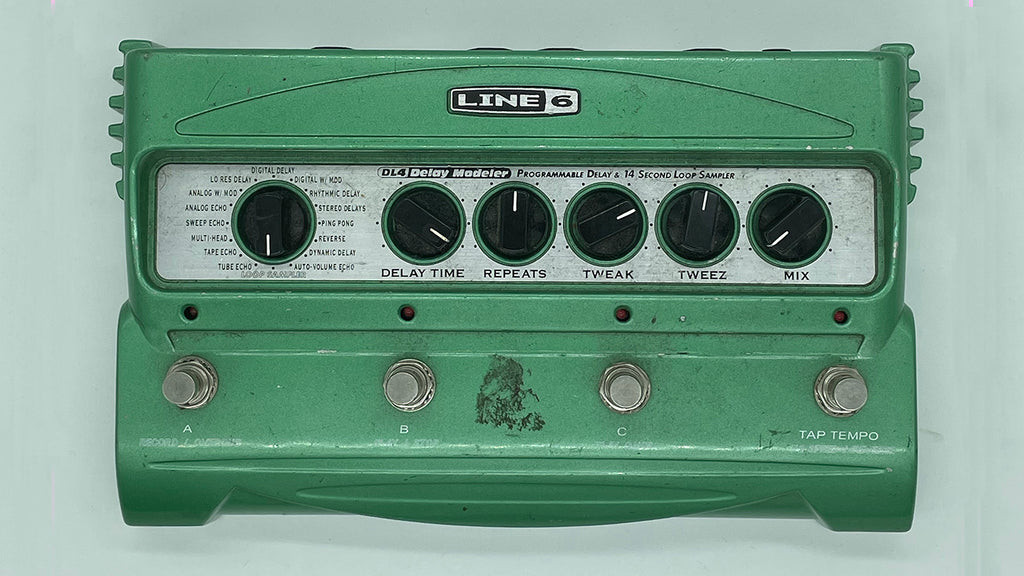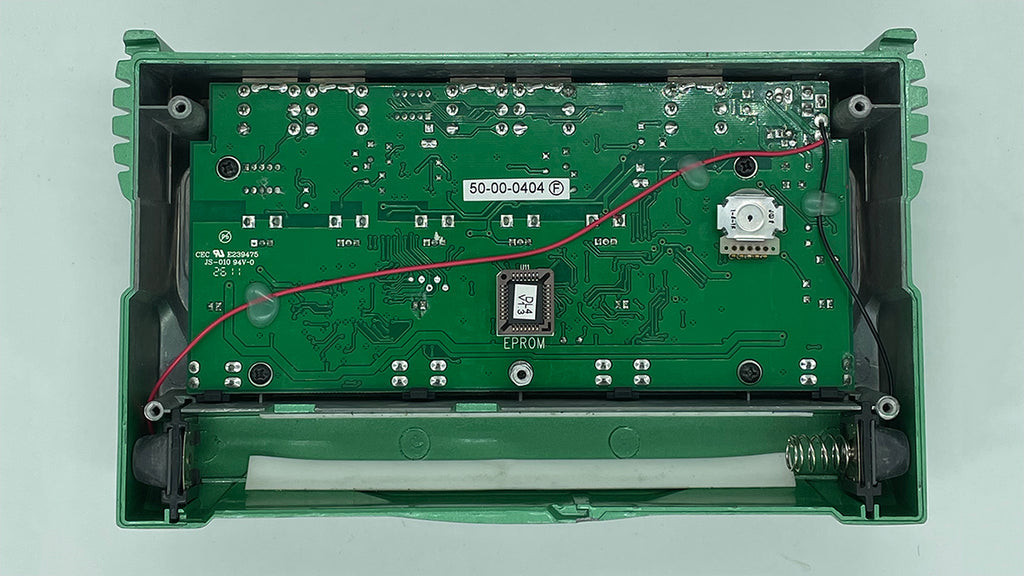 Line 6 DL4
Line 6 DL4
It’s rare to find a piece of music gear that not only stands the test of time but also fundamentally reshapes how musicians create. However, the Line 6 DL4 Delay Modeler, a seemingly unassuming green stompbox, managed to do just that. This wasn’t just another delay pedal; it was a catalyst that redefined genres and empowered musicians to explore new sonic territories. Interestingly, Jeorge Tripps of Way Huge fame had a hand in its creation, adding to its pedigree, even though it emerged under the Line 6 banner. This is the story of the Line 6 DL4, a pedal that became a legend.
For those unfamiliar, the DL4 is fundamentally a delay pedal, but to simply categorize it as such would be a disservice. It’s part of Line 6’s pioneering XX4 series, a line of modeling pedals designed to emulate classic and sought-after effects. Alongside the DL4 Delay Modeler, the series included the MM4 Modulation Modeler, FM4 Filter Modeler, DM4 Distortion Modeler, and briefly, the AM4 Amp Modeler. While the Amp Modeler is discontinued, the others, including the later addition JM4 Looper, remain highly regarded and widely used. Each aimed to bring a range of modeled sounds into a single, convenient pedal format.
The Looper Revolution: Why the DL4 Became Essential
Released in 1999, the Line 6 DL4 quickly became ubiquitous, particularly in the burgeoning indie and alternative rock scenes of the 2000s. If you were listening to guitar-driven music during that era, chances are the DL4’s sonic fingerprints are embedded in your auditory memory. While it excelled as a delay, its true innovation and lasting impact stemmed from its integrated looper mode. This feature allowed guitarists to record phrases in real-time, manipulate them, and layer them to create complex and evolving soundscapes. This capability moved beyond simple delay effects, offering a powerful tool for composition and live performance. Many of the seemingly impossible guitar textures and intricate arrangements that defined the sound of that decade owe a debt to the DL4’s intuitive and versatile looper.
At a time when pedal manufacturers were focused on cramming more and more effects into single units, Line 6 took a different approach with the DL4. They weren’t just trying to compete on quantity; they were offering a fundamentally different way for musicians to interact with their gear. The DL4 encouraged intuitive experimentation and real-time sonic manipulation, fostering a more dynamic and reactive approach to music creation.
Live Performance Pioneer: The DL4 in Action
The impact of the DL4 was palpable, especially within live music scenes. Recalling the vibrant music scene in Portland during the 2000s, the author notes the DL4’s sudden prevalence on pedalboards. A vivid memory of seeing Minus the Bear, supporting These Arms are Snakes and Thunderbirds are Now!, at a secret pre-opening show at the Hawthorne Theater highlights this point. Guitarist Dave Knudson of Minus the Bear, known for his intricate and looping-heavy style, took the stage with four DL4s on his pedalboard. This wasn’t an anomaly; it was a testament to the pedal’s transformative power.
One of Minus the Bear’s signature songs, “The Fix,” perfectly exemplifies the DL4’s potential. The pedal’s “Play Once” looper mode is key to this. It allows players to record a loop and trigger it with a single stomp of a footswitch. By pre-loading loops and strategically using the “Play Once” mode, musicians could seamlessly integrate complex looped parts into their live performances. Furthermore, the DL4 offered features like half-speed and reverse playback, expanding the sonic palette even further. In essence, the DL4 brought the creative possibilities of a recording studio’s editing suite directly to the stage, empowering live musicians in unprecedented ways.
 Line 6 DL4
Line 6 DL4
DIY Culture and Enduring Legacy
The DL4’s influence extended beyond just inspiring artists; it also fueled a significant DIY boom within the guitar community. Ironically, despite its innovative design, the DL4 gained a reputation for switch unreliability. This led bands who heavily relied on its features to stockpile them, sometimes carrying ten or more on tour. Indie bands touring throughout the 2000s likely have stories and broken DL4 units gathering dust in practice spaces. While readily available at major music retailers like Guitar Center, the need for repairs became a recurring issue, especially for bands touring outside of major cities.
This reliability challenge inadvertently fostered a DIY repair culture. While pedal repairs weren’t commonplace at the time, “knowing a guy” who could fix pedals became a valuable asset in local music scenes. For many Portland musicians, that “guy” was the author. As musicians began to delve into the DL4’s internal workings to replace the problematic switches, they started discovering and developing modifications. These mods unlocked features like additional preset banks, glitch effects within the delay path, and direct access to the looper mode, streamlining workflow and expanding functionality. Soon, a thriving market for these modifications emerged, further solidifying the DL4’s place within the DIY pedal community.
Even today, the Line 6 DL4 remains highly sought after. Guitarists appreciate its straightforward interface, versatile feature set, and the unique sonic character it imparts. Its legacy is passed down through generations of musicians, ensuring its continued relevance. Despite still being in production, the Line 6 DL4 has undeniably earned its place as a true classic, a piece of gear that belongs in the pantheon of essential musical instruments.
